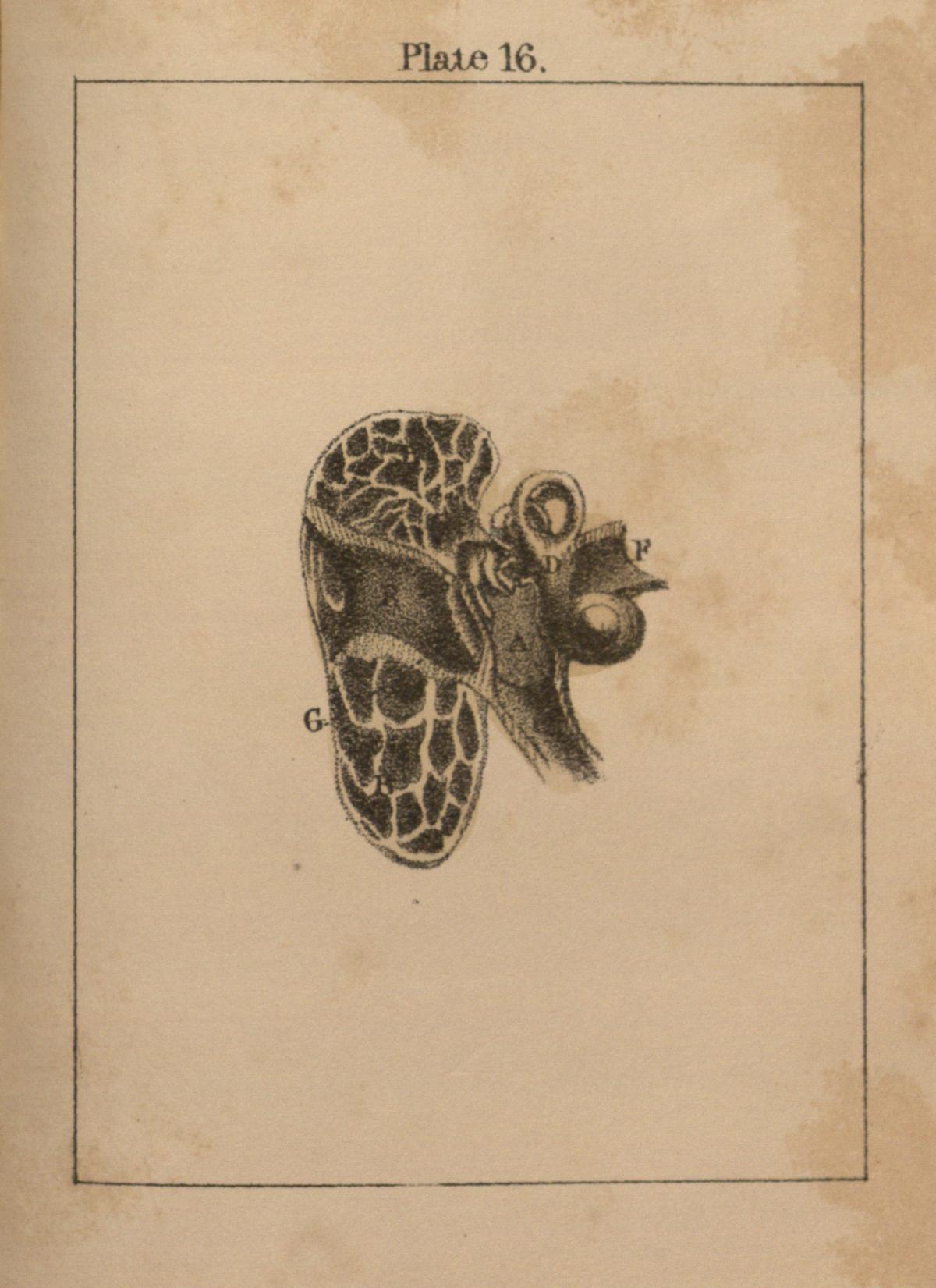The sonorous vibrations collected by the winding channels of the external ear, and transmitted along the auditory passage, strike the tympanum or drum, which divides the outer from the inner ear. It stretches obliquely from above downwards across the bottom of the passage and, in a natural state, is impervious to air . . . the purpose of the drum is to receive the sonorous vibrations from without, and to repeat them, so that the inner parts may take them up, and render them cognisable to the mind. ("The Ear" 411)
The sonorous vibrations collected by the winding channels of the external ear, and transmitted along the auditory passage, strike the tympanum or drum, which divides the outer from the inner ear. It stretches obliquely from above downwards across the bottom of the passage and, in a natural state, is impervious to air . . . the purpose of the drum is to receive the sonorous vibrations from without, and to repeat them, so that the inner parts may take them up, and render them cognisable to the mind. ("The Ear" 411)
Copyright
©
Vetted?
Yes


